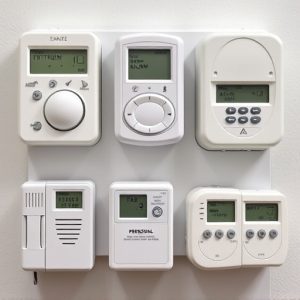Silent Wearable Alarms: Safe and Discreet Emergency Communication in Buildings
Wearable emergency devices with silent alerts enhance safety in buildings by providing discreet comm…….
Wearable emergency devices with silent alerts enhance safety in buildings by providing discreet communication and quick response times via location data. These gadgets link to emergency services, offer GPS tracking, automatic fall detection, and durable designs for optimal protection, especially in large structures or humid environments. When choosing a device, prioritize personal alarm range coverage, long battery life, and customizable interfaces for tailored safety needs.
In today’s fast-paced world, having a wearable emergency device can be a lifesaver. These compact gadgets offer silent alerts, ensuring discreet yet effective communication during crises. This article delves into the benefits and functionality of wearable emergencies devices, with a particular focus on their silent alert systems. We explore critical considerations for personal alarm range in buildings, guiding you in choosing the ideal device for optimal safety.
- Understanding Wearable Emergency Devices: Benefits and Functionality
- Silent Alerts: A Discreet yet Effective Communication Method
- Personal Alarm Range in Buildings: Coverage and Compatibility
- Choosing the Right Device: Features to Consider for Optimal Safety
Understanding Wearable Emergency Devices: Benefits and Functionality
Wearable emergency devices, often in the form of personal alarms, are innovative solutions designed to enhance individual safety and security. These compact gadgets offer a range of benefits, especially in enclosed spaces like buildings. One of their key features is the ability to send silent alerts, ensuring discreet communication during emergencies without drawing unnecessary attention. This is particularly useful in situations where immediate assistance is required but privacy or noise levels prevent loud alarms from being heard.
The functionality goes beyond just silent signals. These devices can be linked to emergency services and security teams, enabling quick response times. With a simple press of a button or automatic detection of extreme conditions, the device sends out a signal that includes the wearer’s location, allowing for swift assistance. This technology is invaluable in buildings with extensive personal alarm ranges, where monitoring and responding to potential hazards become more manageable and efficient.
Silent Alerts: A Discreet yet Effective Communication Method
Silent alerts have emerged as a discreet yet powerful communication method for wearable emergency devices, particularly in enclosed spaces like buildings. Unlike traditional alarms that can draw attention and potentially cause panic, silent alerts use subtle vibrations or subtle light signals to notify wearers of an emergency without alerting others. This is especially valuable in high-rise offices or residential complexes where loud noises could disrupt work or sleep cycles. By integrating personal alarm range capabilities within these structures, occupants can discretely activate their devices for help when needed.
The effectiveness of silent alerts lies in their ability to provide immediate, non-intrusive warnings. In critical situations, every second counts, and silent alarms ensure individuals receive the necessary attention without causing a disturbance. This technology empowers users to take control of their safety while maintaining privacy and peace in public or private spaces.
Personal Alarm Range in Buildings: Coverage and Compatibility
The effectiveness of wearable emergency devices with silent alerts heavily relies on the personal alarm range in buildings, which encompasses both coverage and compatibility. In terms of coverage, these devices must be able to transmit signals across vast areas within a building or campus, ensuring that individuals can activate their alarms from any location without signal obstruction. This is particularly crucial for large structures or facilities with multiple stories or diverse layouts.
Compatibility is another key factor. The personal alarm system should seamlessly integrate with existing security infrastructure and communication networks. This includes compatibility with local emergency services, security personnel, and other wearable devices or sensors within the environment, facilitating a coordinated response during critical situations.
Choosing the Right Device: Features to Consider for Optimal Safety
When selecting a wearable emergency device, understanding its features and capabilities is paramount for ensuring optimal safety. One crucial aspect to consider is the personal alarm range in buildings. These devices often emit silent alerts, which can be life-saving in situations where loud noises might attract unwanted attention or are not feasible. The range should allow for effective communication with emergency services even in large or multi-story structures. Look for devices with GPS tracking and automatic fall detection, as these features enable swift response times by providing precise location data.
Additionally, consider water resistance and durability, especially if the device is intended for outdoor use or in humid environments. A long-lasting battery life is another essential feature, ensuring the device remains operational during extended periods of need. Wireless charging capabilities can also be beneficial, eliminating the hassle of constantly replacing or recharging batteries. User-friendly interfaces and customizable alert settings further enhance the utility of these devices, allowing wearers to adapt them to their specific needs and preferences.
Wearable emergency devices with silent alerts offer a discrete yet powerful solution for personal safety, especially within buildings. By understanding the benefits and functionality of these devices, along with factors like personal alarm range in buildings and compatibility, individuals can make informed choices to enhance their safety. With the right device, you can rest assured that help will arrive swiftly during emergencies, ensuring peace of mind.


